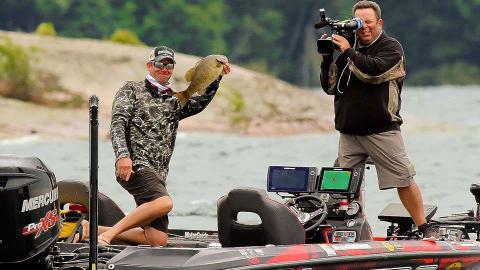Tim Moore | Originally published in GameKeepers: Farming for Wildlife Magazine. To subscribe, click here.
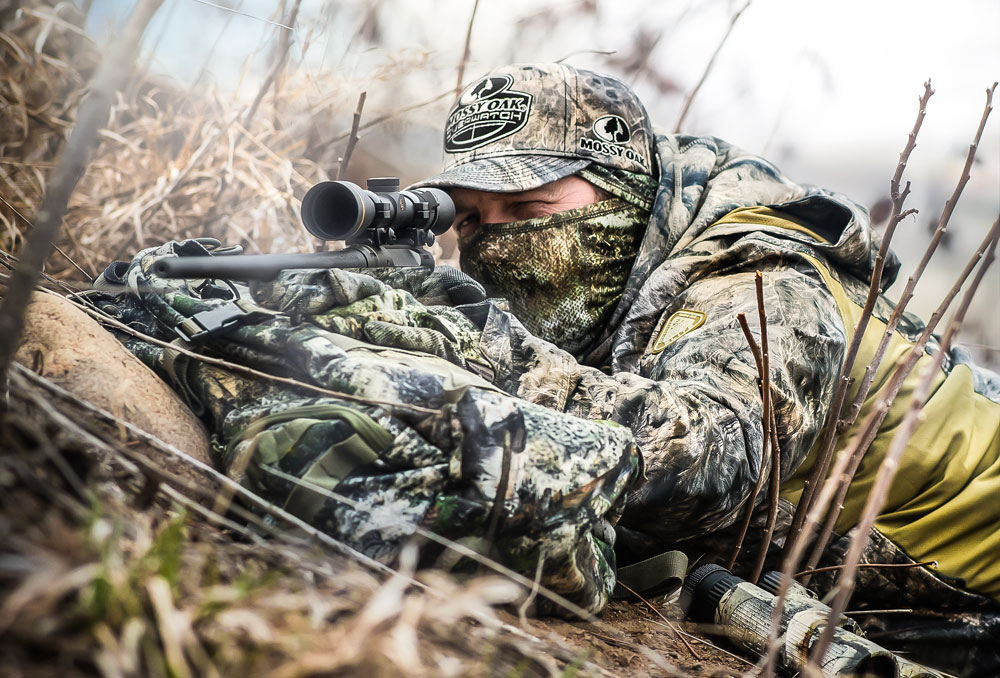
Three years ago, a friend invited me to go hunting and described the area as a dense wooded area. I decided to take my 30-30 only to find out I was assigned a shooting house where 300-500 yard shots were possible. I expressed concern for not bringing my long-range rifle and requested another assignment. My friend handed me a Ruger 308 bolt-action rifle with Nikon optics and a standard reticle. Feeling discomfort with a rifle I didn’t understand, I asked him the “rifle zero range” to which he replied, “I do not know but any range out to 300 just point and shoot.” I remained silent hoping that any deer would be within 100 yards. Later that morning, I observed the biggest buck of my life feeding and oblivious to my presence. The only problem was that he was approximately 500 yards away. I had zero confidence in my ability to kill that buck and passed on the opportunity.
Eventually, that once-in-a-lifetime trophy will appear at long range. What is long range? Long-range can be defined as a distance requiring elevation adjustments or holdover. Cold temperatures and numb fingers can degrade your ability to execute a steady shot. Do you take the shot? What is the maximum range that you AND your rifle are capable of hitting the deer in the vital organs and making an ethical kill? If the bullet impacts the vital organs, does it have the mass and velocity to penetrate and kill the deer? Modern precision rifles, optics, and laser rangefinders facilitate long-range hunting and give some the impression that such shots are easy. This equipment requires specialized knowledge and skill for it to work to your advantage. We will discuss basic concepts for you to practice, before the upcoming season, which will increase your confidence in taking that long-range shot. Know your limitations and understand how your rifle, optics, and ammunition function as an integrated system. Chance favors the prepared mind!
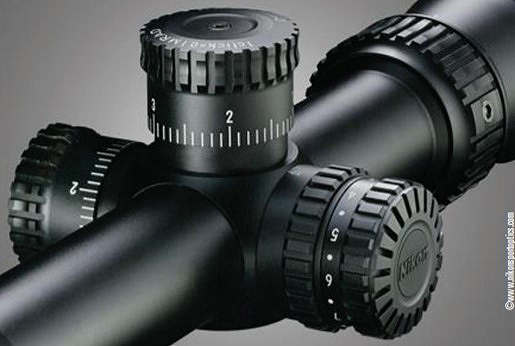
Understanding Your Rifle Scope
You may have only seconds to estimate/measure the range, make necessary elevation adjustments, and execute a long-range shot. Rapid elevation adjustments require hand-adjustable turrets or holdover using a reticle with MOA/MRAD (Minute of Angle/Milliradian) hash marks as illustrated on the previous page. Holdover with a standard reticle is nothing more than a guess. You can estimate the distance with reasonable accuracy using your hashed reticle if you forgot the laser rangefinder. The reticle is located in the front or rear focal plane.
First focal plane (FFP)scopes magnify the reticle and image and are suitable for range estimation and/or holdover throughout the entirety of the magnification range. Second focal plane (SFP) scopes magnify the image but not the reticle. The reticle remains the same size and the hash marks are only accurate at one magnification. Consult your scope’s user manual to determine the location of the focal plane and the proper magnification for range estimation. For most hunting situations, a rear focal plane scope is appropriate. No choice of focal plane or adjustment will give you an advantage.
The turret adjustments and ranging reticle will either be minute of angle (MOA) or milliradians (MRAD). MOA and MRAD are angular measurements that correspond to an offset that increases with range as illustrated in the table below. When using MOA scopes for hunting, it is appropriate to round down and use values of 1 inch per 100 yards of range simplifying the math. Typical scope adjustments are 0.25 MOA and 0.1 mil. You can see that a 0.25 MOA is a finer adjustment than 0.1 mil with 0.25 vs 0.36 inch respectively at a range of 100 yards.
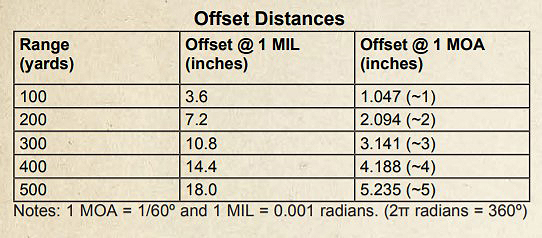

Estimating Target Range
I recommend laser rangefinders due to their affordability and the fact that they eliminate mental errors. If you forget your rangefinder or if the batteries die, you will have to estimate the distance using your hashed reticle. Accurate range estimates require simple math calculations and one average deer dimension. Keep in mind that variations in animal sizes will result in incorrect range estimates and you should check the average size of wildlife in your area to modify the equations accordingly. A deer that is quartering to or away from you or standing in tall grass will complicate range estimation and shooting.
The vital zone diameter for the average whitetail deer is approximately 8-10 inches in diameter. The whitetail deer dimension that greatly simplifies the range equation is the average distance from the ground to the back. That is 36 inches. The second column of the table above lists the most general form of the range-estimation equations for MOA and MIL scopes. Substituting the average distance from ground to the back results in the simplified equation in column three. The resulting equation for your scope is easy to remember and does not require a calculator.
Ammunition
Muzzle velocity variations result in vertical dispersion of the point of impact and are inherent to ALL ammunition. I have measured the muzzle velocity of factory ammunition with extreme spreads with variations exceeding 100 feet per second (fps). It may not sound like much with muzzle velocities approaching 3000 fps but can result in a miss at 500 yards. Remember that we are aiming at a circle less than 10 inches in diameter. An average muzzle velocity, measured during late August when it’s 100° F, may decrease by 80 fps if the temperature drops to 20° F. Some powders offer greater temperature stability and you can expect the muzzle velocity to decrease from 0.5 to 1 fps per degree drop. Handloaded ammunition will reduce extreme spread and provide consistent accuracy if done properly. It is best practice to zero your rifle and measure the muzzle velocity at a temperature representative of your average hunting conditions. Measure the muzzle velocity record-ing a ten-round (minimum) string and compute extreme spread, standard deviation, and average velocity. The extreme spread is the difference in the maximum and minimum velocities. Additional uncertainty arises due to the behavior of the cold-bore shot for you will not have the luxury of a warm barrel while hunting in the snow. The most challenging uncertainty of a bullet trajectory is wind. If you hunt in areas prone to strong winds, the best way to minimize the effects of wind is to practice reading the wind and shooting in windy conditions. Spin drift and the Coriolis effect induce lateral dispersion of the bullet POI. Coriolis corrections are unwarranted at practical hunting ranges.
Range Testing
I do not want you to think that I wrote this article based on a finely tuned rifle I have been shooting for years. The first reason for choosing the 243 caliber is ethics. I have heard countless stories of hunters unable to track deer due to the lack of blood trails when shot with a 223. As you increase the caliber and subsequent bullet weight, you will enhance the distance I discuss in this article. I also wanted to imitate the situation that I hear so much; “I just bought a new hunting rifle and need to zero it in before hunting season begins!” I took a new Remington R-25 in 243 and mounted a Nikon 6-24x50 X1000 scope with MRAD adjustments and reticle. I really like the Hornady Precision Hunter ammunition loaded with the 90-grain ELD-X bullet. The ELD-X designation stands for Extremely Low Drag – EXpanding and these bullets are designed for long-range hunting. I decided to tailor a hunting round best suited for my rifle and shorter barrel using the Hornady 90 grain ELD-X bullet.
After testing several powder charge weights, I found an accuracy node at 2830 fps using a Magnetospeed chronograph.
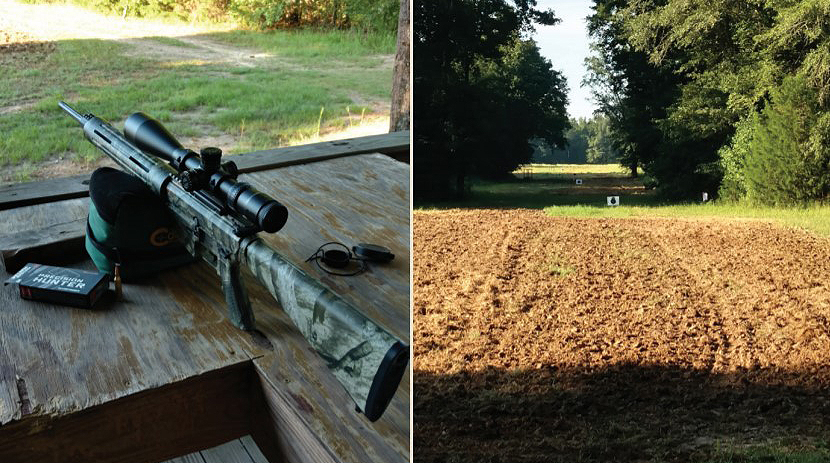
My target panels consisted of 12-inch diameter splash targets placed on 24 X 18 inch election signs positioned in 100-yard increments out to 500 yards. For proper perspective, I took the photograph below that illustrates the targets beyond 200 yards fade into the landscape.
I cleaned the barrel to observe behavior of the coldbore shot at 100 yards and found the point of impact about 1 inch to the left. Keep in mind that your coldbore behavior will be different. Your first shot at a deer this winter will be a cold-bore shot. When taking such a shot, I encourage you to use some type of support such as a window frame or bipod that enhance rifle stability and increase the probability of success.
Even though I had measured the exact range to each target, I used the reticle to estimate the range to each target based on the election-sign dimensions. The estimated ranges in the table below utilized the most general form of the range-estimation equation and not the simplified equation. I did not attempt to adjust the numbers to make it appear that I had superb skills in this area. I had placed some of the signs in tall grass and the mirage in the late-summer Mississippi humidity makes it all the more difficult. Range estimation using my Nikon X1000 MRAD scope requires the 18X magnification setting. You can clearly see by looking at the targets at the end of this piece that I had issues estimating the range at 300 and 400 yards.
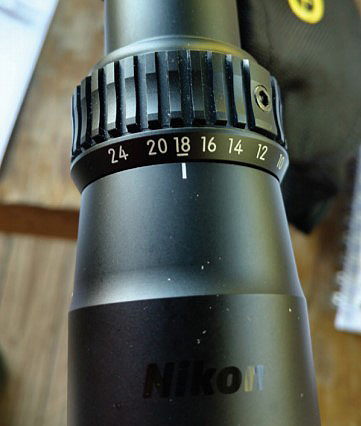 Ballistics applications simulate the bullet trajectory given the muzzle velocity, atmospheric conditions, and general rifle/scope information. I developed my own program called Alpha-Omega Ballistics and input all of the required information necessary to compute the ballistic trajectories for each range and the necessary adjustments. While ballistics applications are very useful, there is no substitute for going to the range and validating the results. The table below clearly illustrates why it is difficult to just “point and shoot” at 300 yards. With a vital zone diameter of 8-10 inches, a drop of 11.2 inches will likely result in a miss. At 500 yards, your bullet impacts the ground before reaching the deer as it drops over 4 feet. The fifth column of the table tabulates the results of Matuna’s Optimal Game Weight equation. This equation computes the weight of an animal that which a bullet with a given weight and velocity will be lethal. The equation is OGW=1.5 ×10−12V3W2 where V is the velocity and W is the bullet weight in grains. This equation is only an approximation and I do not subscribe to its validity. I only present it as a basis of comparison because the ELD-X bullet, and any game bullet, is certainly capable of kills at longer ranges with proper shot placement.
Ballistics applications simulate the bullet trajectory given the muzzle velocity, atmospheric conditions, and general rifle/scope information. I developed my own program called Alpha-Omega Ballistics and input all of the required information necessary to compute the ballistic trajectories for each range and the necessary adjustments. While ballistics applications are very useful, there is no substitute for going to the range and validating the results. The table below clearly illustrates why it is difficult to just “point and shoot” at 300 yards. With a vital zone diameter of 8-10 inches, a drop of 11.2 inches will likely result in a miss. At 500 yards, your bullet impacts the ground before reaching the deer as it drops over 4 feet. The fifth column of the table tabulates the results of Matuna’s Optimal Game Weight equation. This equation computes the weight of an animal that which a bullet with a given weight and velocity will be lethal. The equation is OGW=1.5 ×10−12V3W2 where V is the velocity and W is the bullet weight in grains. This equation is only an approximation and I do not subscribe to its validity. I only present it as a basis of comparison because the ELD-X bullet, and any game bullet, is certainly capable of kills at longer ranges with proper shot placement.
Shooting Results
I conducted the testing at a temperature of 88⁰ F and with a heat index of about 112˚F with humidity around 88%. I shot each target with a five-shot string to determine the range to which I can accurately hit the deer in the vital zone with ALL five shots. At ranges out to 200 yards, I have a 100% confidence in my ability to kill a deer. The bullets begin to disperse beyond 200 yards. At a range of 300 yards, four of the five bullets impacted within the 10-inch circle representing the vital organs. At 400 yards, only three bullets impacted the target while the fourth bullet impacted the edge. At a range of 500 yards, two bullets clearly impacted the target. Based on the 300 and 400 yard targets, I believe shot placement at 500 yards to be a little lucky. The results of the Matuna’s equation above suggest the ethics of hunting trophy bucks, in excess of 200 lb, with a 243. However I would not hesitate to shoot a trophy buck within 200 yards. Based strictly on a five shot string, I have a 80% probability of killing a deer at 300 yards, 60% probability at 400 yards, and 40% probability at 500 yards.
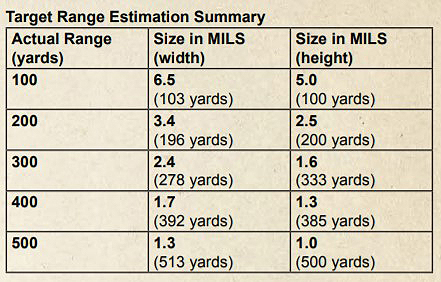
Conclusions
Based on the results of my 243, I believe my ethical limit for shooting a trophy buck to be about 200 yards. I will shoot more in the coming weeks to determine if I can extend that range to 250 yards. As the temperature drops in October, I will conduct more testing to determine the muzzle-velocity variation with temperature. I discourage you from taking long-range shots at which you have not practiced. Such shots can only injure the deer causing it to die days or weeks later. Increasing caliber and bullet weight will increase the distance and probability of harvesting a large buck. Know your limits and use a rest (bipod, tripod, tree, etc.) to stabilize the rifle while taking these shots. It takes a steady rifle to place that shot accurately. You can easily laminate a ballistics cheat sheet to keep on you with the turret settings at ranges out to your ethical range. Practice, practice, practice!
If you have any questions, please feel free to email me at twm.msu@protonmail.com.

















